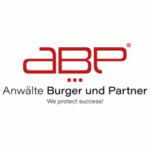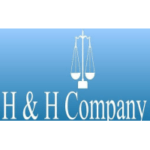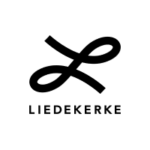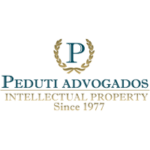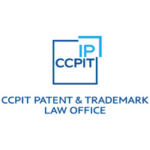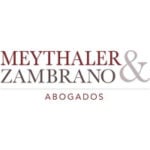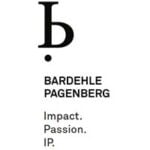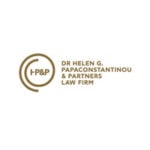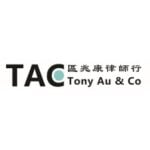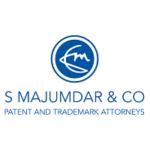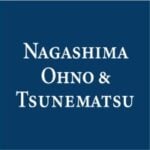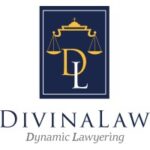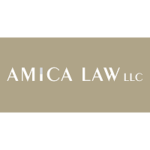-
What different types of intellectual property rights exist to protect: (a) Inventions (e.g. patents, supplementary protection certificates, rights in trade secrets, confidential information and/or know-how); (b) Brands (e.g. trade marks, cause of action in passing off, rights to prevent unfair competition, association marks, certification marks, hallmarks, designations of origin, geographical indications, traditional speciality guarantees); (c) Other creations, technology and proprietary interests (e.g. copyright, design rights, semiconductor topography rights, plant varieties, database rights, rights in trade secrets, confidential information and/or know-how).
(a) Inventions (e.g. patents, supplementary protection certificates, rights in trade secrets, confidential information and/or know-how);
Patents
In the UK, patents provide inventors with exclusive rights to protect their inventions, preventing others from making, using, or selling the invention in the UK without permission. They are available for inventions which, after detailed examination, are deemed to be novel, involve an inventive step and capable of industrial application. In return for the grant of a patent, details of the invention must be disclosed clearly and comprehensively in order for any skilled person to be able to use the technology on expiry of the patent.
Certain categories of inventions are excluded from patentability in the UK, such as discoveries, business methods or computer programs, unless these offer a technical contribution. Other non-patentable inventions include aesthetic creations; or those which are contrary to public policy or morality.
In recognition of the lengthy regulatory process and the high costs of research, development and trial of pharmaceutical products, Supplementary Protection Certificates (SPCs) may extend the protection of patented pharmaceutical and plant protection products by up to five years. To qualify for such protection, the product must have: (a) a valid UK patent; (b) obtained the first marketing authorisation to place the active ingredient on the UK market; and (c) no existing SPC in place.
An additional six-month extension is available for medicinal products having undergone paediatric testing.
Rights in trade secrets, confidential information and know-how
In the UK, the law against the misuse of trade secrets and other confidential information has developed through common law traditions. This law protects information that is inherently confidential and subject to an obligation of confidence. The tort of breach of confidence can help prevent the unauthorised use of such information.
The Trade Secrets (Enforcement etc.) Regulations 2018 codified certain aspects of common law related to the misuse of confidential information. A trade secret is defined as information which (i) is not generally known or easily accessible to those who typically handle such information, (ii) has commercial value due to its secrecy, and (iii) has been kept secret through reasonable measures.
Confidential information can also be protected by an obligation of confidentiality under common law or through specific contractual terms, such as those found in non-disclosure agreements and employment contracts.
(b) Brands (e.g. trade marks, cause of action in passing off, rights to prevent unfair competition, association marks, certification marks, hallmarks, designations of origin, geographical indications, traditional speciality guarantees);
Trade marks
A brand owner can protect their name, product/service name or logo with registered trade marks. Trade marks must be capable of distinguishing their brand or their products or services from those of another and must being capable of being represented on the register. It must also not be devoid of distinctive character or exclusively indicate the kind, quality, quantity or other characteristics of the goods or services. A mark which does not immediately appear to have distinctive character can acquire distinctiveness through use.
Where a trade mark has not been registered, protection may still be available through the tort of passing off. A passing off claim can be brought where another party has misrepresented its goods or services as being those of the claimant (where the reputation or goodwill in the claimant’s brand is significant) and the claimant resultantly suffers financial and/or reputational damage. Although passing off offers some protection for unregistered marks, it can be challenging to prove since the courts tend to set a high evidence threshold, requiring clear proof of deception or confusion among customers and substantial evidence of reputational or financial harm caused.
Other protections
It is also possible to protect and/or identify certain goods and services in the United Kingdom by way of certification marks, collective marks, protected designations of origin, protected geographical indications, traditional speciality guarantees and hallmarks.
(c) Other creations, technology and proprietary interests (e.g. copyright, design rights, semiconductor topography rights, plant varieties, database rights, rights in trade secrets, confidential information and/or know-how).
Copyright
Copyright protects original literary, dramatic, musical and artistic works, as well as films, sound recordings, broadcasts, and typographical arrangements. Protection is based upon either the author’s nationality or the country of first publication of the work, and is automatic upon the creation of the work, meaning that no registration is required. Infringement of copyright is assessed qualitatively and is dependent upon the copying of the whole or a substantial part of the protected work.
Designs
Registered designs may also protect the appearance, shape or decoration of a product.
However, designs do not necessarily have to be registered to afford protection. In the UK there are two forms of design right which apply automatically on the creation of a design: the first protects the shape and configuration of a product; and the second, which is known as ‘supplementary unregistered design right’ protects the appearance of a product, whether 2-dimensional and/or 3-dimensional, including its can be 2-dimensional and 3-dimensional and includes its shape, colour, texture, materials and/or ornamentation
Plant Varieties
Plant variety rights (PVRs) otherwise known as plant breeders’ rights, are a form of protection specifically for new plant varieties. PVRs grant a plant variety breeder, or a person who discovers and develops a plant variety, exclusive rights to control the use of the variety, including the plant’s propagating materials. This prevents others from reproducing, conditioning for propagation, selling, importing/exporting, or stocking the plant variety. A plant variety must be distinct, uniform and stable to qualify for PVRs. This means that it must be clearly distinguishable from other varieties, consistent in its characteristics, and remain unchanged over successive generations.
Following Brexit, any plant variety on the register under EU Council Regulation 2100/94 before 31 December 2020 will be treated for the remainder of its term as a UK PVR granted under the national plant variety protection regime.
Database Rights
Databases in the UK can be protected through two mechanisms: (1) sui generis database rights; and (2) copyright (as above). The sui generis database right allows the owner to prevent others from copying, extracting, or reusing substantial parts of the database without seeking permission. In order to receive such protection, the owner of the database must show a substantial investment in its creation (e.g., evidence of obtaining, verifying or presenting its contents).
Following 31 December 2020, the UK continues to recognise existing database rights that were established before 1 January 2021 under the EU Database Directive. However, databases made in the UK following this date will only be protected where completed by UK-based businesses and individuals.
-
What is the duration of each of these intellectual property rights? What procedures exist to extend the life of registered rights in appropriate circumstances?
Patents
Patents last for up to 20 years from their filing date (subject to payment of renewal fees). Supplementary Protection Certificates can extend protection by up to 5 years (with an additional 6 months offered for paediatric medicines)
Trade Marks
A trade mark is required to be renewed every ten years in order to remain active. There is no limit to how many times it can be renewed. To the extent a trade mark is not registered, the law of passing off will allow indefinite protection as long as sufficient goodwill in the applicable products or services is maintained.
Designs
A registered design must be renewed on its fifth anniversary to remain in force and every five years thereafter up to a maximum duration of 25 years.
Unregistered designs under the UK design right last for 15 years from first creation of the design or 10 years from the first sale of a product made to the design. Designs protected by the supplementary design right last for 3 years from creation or first promotion of the product.
Designs protected by design right in the UK are subject to a “licence of right” under which the owner must allow others to use the design on request during the final 5 years of protection, subject to agreement of licence terms, which may include the payment of a royalty
Copyright
The duration of copyright depends on the type of work. Generally, copyright lasts for the life of the author plus 70 years, or where the work was generated by a computer, 50 years following end of the year in which the work was generated.
Trade secrets, confidential information and know-how
Trade secrets, confidential information and know how are potentially protected indefinitely, subject to the information remaining secret. Trade secrets are also subject to the information providing competitive advantage)
Databases
Databases protected under the EU Sui Generis database right or corresponding UK database right (depending on the date and place they were made) last for 15 years from the end of the year in which the database was completed, or where published, 15 years from the end of the year in which the database was made publicly available. Substantial changes to the content of databases are also protected for 15 years, so effectively a rolling term of protection can be achieved where a database is refreshed and updated regularly.
Plant varieties
Plant varieties are protected for 25 years from the date of grant, or 30 years from the date of grant in respect of trees, potatoes and vines.
Semiconductors
Semiconductor topography rights which are not commercially exploited continue for up to 25 years from the end of the year in which the typographical arrangement is published, or where the work is not published, 15 years from the date the topography was first recorded in a design document or an article was first made to the topography. (10 years from the end of the year in which the topography was first commercially exploited)
-
Who is the first owner of each of these intellectual property rights and is this different for rights created in the course of employment or under a commission?
The first owner of intellectual property rights (IPRs) depends upon the type of work and the circumstances under which it was created. However, generally, the first owner of an IPR in the UK is the inventor/author/designer/creator/breeder who created the work.
Where the work is created in the course of employment by an employee, typically the employer is the first owner of the IPRs. However, where an employee creates the work outside of their normal duties of employment, the employee may instead be the owner of the IPRs.
Unless otherwise agreed, where work is created under a commission, the first owner of the IPRs will usually be the inventor/author/designer/creator/breeder who created the work.
-
Which of the intellectual property rights described above are registered rights?
In the UK, the following IPRs are registered rights:
- patents;
- plant variety rights;
- registered trade marks; and
- registered designs
As noted above, unregistered rights in trade marks and designs can also exist regardless of registration.
-
Who can apply for registration of these intellectual property rights and, briefly, what is the procedure for registration?
Trade Marks
Any person or incorporated business which is capable of owing property in their own name, with a commercial operation in the UK, can apply for registration of a trade mark. Every applicant must be either currently using the trade mark (or allowing someone else to use it with their consent) or have a bona fide (good faith) intention to use it in relation to the goods or services requested.
The trade mark registry of the UK Intellectual Property Office follows the following procedure: the application to register a trade mark will be filed by either the applicant or a representative, either of whom must have an address for service in the UK. Once filed, the registry will examine the application and either accept it as it is or request changes so that it meets the requirements for filing. When accepted by the registrar, the mark will be published for opposition purposes. If no opposition is filed, the mark will progress to registration.
Designs
A design can be filed by any entity with the UK Intellectual Property Office, which will examine the design and either request amendments or accept it for registration and publication of registration.
Patents
Anyone can file an application for a patent. The patent may be granted to either the inventor (or inventors) of the relevant invention, or (taking precedence over the inventor) the person who owns the legal title to the invention (such as the inventors’ employer or the legal assignee of rights to the invention). An application for a national GB patent is made with the UK Intellectual Property Office (UK IPO) – usually by an appropriately qualified representative – and must:
- contain a request for the grant of a patent on the appropriate form;
- provide contact details for the applicant;
- contain a specification, which:
- discloses the invention in a sufficiently clear and complete manner;
- relates to one invention or a group of inventions which form a single inventive concept; and
- clearly and concisely defines the matter for which protection is sought; and
- be accompanied with the requisite fee.
It is also possible to register a patent in the UK by filing an application at the World Intellectual Property Office (WIPO) or the European Patent Office (EPO) as part of an international or European filing strategy. With the latter the patent application is examined by the European Patent Office and, upon the grant of the patent, the patentee must validate the European patent in the UK in order to obtain protection there.
Supplementary Protection Certificates
The owner of a patent can apply for a Supplementary Protection Certificate, even where the relevant marketing authorisation is not in their name, by filing an application with the UK IPO.
Plant Varieties
An application to register a plant variety right can be filed by a breeder, a person who discovers and develops a variety, or a successor in title of either of the aforementioned persons. Such an application can be made using the UPOV PRISMA international application platform, usually by an appropriately qualified representative.
-
How long does the registration procedure usually take?
Patents
Before the UK IPO, a patent application will generally take between two and four and a half years from the date of filing, varying dependent upon the complexity of the invention and the thoroughness of the examination process. The level of objections to the application raised by the patent office and the speed at which the applicant responds to such objections may also change the timeframe of an application.
In some certain cases, it is possible for patent applications to be put through accelerated processing, particularly where the invention has environmental benefit (“green channel”) or where there is a potential infringement. Accelerated processing is subject to request and the payment of additional fees.
Trade marks and registered designs
A trade mark application, assuming no complications, usually takes approximately 4 to 6 months to mature to registration.
A design registration will usually take approximately 1-2 months to mature to registration, assuming there are no complications.
-
Do third parties have the right to take part in or comment on the registration process?
Patents
In the UK, third party observations (TPOs) can be filed in respect of patent applications filed with the UKIPO. TPOs enable third parties to make observations on the patentability of an invention after the application has been published but before the patent is granted. Observations must be in writing and should address patentability criteria (e.g., novelty, inventive step, industrial applicability). Applicants are notified of TPOs and are given an opportunity to respond. Following receipt of both TPOs and applicant responses, the comptroller can decide to proceed to grant the application, refuse the application or require amendments.
Patents granted by the European Patent Office can be opposed by third parties. Such an opposition must be filed in writing within nine months of the publication of the grant of the patent. Opposition proceedings follow a formal procedure and can take many years to resolve. The patent in question can be upheld as granted, maintained in an amended form or revoked.
Trade marks and designs
Following publication of a trade mark, third parties have 2 months in which to challenge the application, which can be extended by a further month by that party. They are also able to apply to cancel or invalidate a trade mark registration on the basis of non-use five years after the registration date.
A design registration can be challenged at any time after registration.
-
What (if any) steps can the applicant take if registration is refused?
Patents
Where patent registration is refused in the UK, an applicant should first review the examination report to understand the reasons for refusal provided by the examiner. They can then take one of the following steps:
- amending the application to address objections, usually by improving the clarity of the delineation of the scope of the invention (claims) – although note that new material cannot be added by the applicant to the patent specification, so any changes made must be supported by the content of the existing application;
- requesting a hearing with the UK IPO where the refusal by the comptroller is believed to be unjustified – if the hearing does not resolve the issue, the decision can then be appealed to the Patents Court; or
- requesting reinstatement within 12 months of the refusal where the applicant failed to comply with procedural requirements (the failure to comply must be deemed unintentional).
European patent applications follow a similar procedure.
Trade marks and registered designs
An applicant can apply for a hearing to discuss the application with the examiner.
-
What are the current application and renewal fees for each of these intellectual property rights?
Patents
The application, search and examination fees for a UK national patent application are currently £310 if the electronic filing process is used, with additional fees where the application is lengthy or has in excess of 25 claims. Paper filing costs slightly more at £400. Renewal fees are payable from the 5th years following filing (regardless of whether the patent is granted at that point, and must be paid each year up to the 20th year following filing. Renewal fees increase each year fro £70 in year 5 to £610 in year 20.
The application fee for an SPC is £250, and annual fees are £600 in the first year rising to £4000 in the final year.
Plant Varieties
The administration fee for national listing and plant breeder’s rights is currently £598 in each case, or £598 as a one off fee for combined listing (national listing and plant breeders right combined). Testing and validation fees vary according to the type of crop concerned, and annual maintenance fees range from £20 to £50 per year depending on the crop.
Trade marks and designs
A trade Mark application currently costs £170 if filed online for one class. Each extra class costs £50. A trade mark renewal, if filed within the renewal period, costs £200 for one class. Each extra class costs £50
A design application currently costs £60 and each additional application costs £40. Each design renewal costs £70 for the first renewal, £90 for the second renewal, £110 for the third renewal and £140 for the fourth renewal as long as within the renewal period.
-
What are the consequences of a failure to pay any renewal fees and what (if any) steps can be taken to remedy a failure to pay renewal fees?
Patents
The renewal period for a patent is between three months before the renewal date (the last day of the month in which the patent was first filed) and up to one month after the renewal date. However, there is a six-month grace period following the renewal date during which the patent proprietor can pay the renewal fee (with an additional late fee of, currently, £24 per month). If the patent renewal fee is not paid after these six months, the patent will lapse, meaning that invention protections will be lost. The patent proprietor is able to apply to restore the patent within the 13 months following the date of patent lapse, providing that sufficient justification as to why the deadline was unintentionally missed is provided. This application costs £135 and may not be successful.
Trade marks and registered designs
A trade mark can be renewed up to six months before the renewal expiry period. There is an automatic six-month grace period where the renewal can be filed with a late fee. After the six-month grace period a registration can be restored within the following six months with a further fee and valid reasons. After that time, the registration is irrecoverable.
A design can be renewed up to six months before the renewal deadline. There is an automatic six-month grace period where the renewal can be filed with a late fee. After the six-month grace period a registration can be restored within the following six months with a further fee and valid reasons. After that time, the registration is irrecoverable. However, it may be possible to file a new trade mark application for the same mark to obtain a new registration.
-
What are the requirements to assign ownership of each of the intellectual property rights described above?
In general, assignment of any intellectual property rights subsisting in the UK must be: a) in writing; and b) signed by or on behalf of the assignor. The assignment should ideally specifically capture any accrued causes of action, ie to sue for past infringement.
Anywhere no (or only nominal) consideration for the transfer is provided, the assignment should be executed as a deed.
It is possible to assign rights in certain future works, such as inventions or copyright works. An assignment of future works must be accompanied by consideration in order to be enforceable (notwithstanding execution as a deed).
-
Is there a requirement to register an assignment of any of these intellectual property rights and, if so, what is the consequence of failing to register?
Assignments of registered intellectual property rights, including patents, registered designs and trade marks (or any applications for any of the foregoing) should be recorded with the UK IPO within 6 months of the date of assignment.
Failure to record within the 6 month period does not invalidate the assignment, but may: 1) result in the title being defeated by a subsequent conflicting transaction or 2) put the assignee at risk on costs the ability to recover costs in an action for infringement of the patent.
-
What are the requirements to licence a third party to use each of the intellectual property rights described above?
In general, a licence of any intellectual property rights subsisting in the UK does not need to be in writing. Informal or unwritten licenses granted by the owner of any rights are generally valid, although there may be lack of certainty over any terms. It is therefore advisable for any licence of intellectual property rights to be in writing.
However, any licence of registered trade marks must be in writing and signed by or on behalf of the owner. An exclusive licence of a registered design should also be in writing in order for the licence to be binding against any assignee (or other successor in title) of the registered design.
Know-how may be licensed in its own right, but the owner should also apply robust obligations of confidence on the licensee to ensure protection of the know-how is maintained.
-
Is there a requirement to register a licence of any of these intellectual property rights and, if so, what is the consequence of failing to register?
A licensee, whether exclusive or non-exclusive, under any registered intellectual property rights may record the licence with the UK IPO, although this is not strictly necessary for the licence to be enforceable. However, registration of a licence is advisable. Failure to register may mean that the licensee’s rights are ineffective against a third party who acquires a conflicting interest in the right in good faith. Failure to register a patent licence within six months of its grant may also result in a costs sanction in any future infringement proceedings.
The principal benefit of registration of a licence of intellectual property rights is that it puts a third party on notice of the licence.
There is no requirement to register licences under any unregistered IP rights.
-
Are exclusive and non-exclusive licensees given different rights in respect of the enforcement of the licensed IP, and if so, how do those rights differ?
Generally speaking, and subject to the terms of the licence, an exclusive licensee of any patent, registered design, or copyright may enforce their rights against infringers in their own name as though they were the proprietor.
In relation to trade marks, an exclusive licensee may, by contract with the owner of the mark, be given the same rights and remedies as if the licence had been an assignment, including the right to bring proceedings in their own name.
Such a right of action, if granted, is concurrent with that of the owner. However, it not compulsory for an exclusive licensee to be given such a right. If the licence agreement is silent on this point, then the exclusive licensee of trade marks will not have their own, separate right of action.
Non-exclusive licensees under any intellectual property right are generally not permitted to enforce their rights against infringers without the consent and cooperation of the owner, though in the case of trade marks, such enforcement rights may be expressly permitted under the licence agreement.
-
Are there criminal sanctions for infringement of any intellectual property rights, and if so, what are they and how are they invoked?
Criminal sanctions for infringement of intellectual property rights can be invoked for both copyright and trade mark infringement. For copyright, criminal liability attaches to an infringer who sells, imports, distributes or possesses infringing articles. For trade marks, there can be criminal sanctions for counterfeiting i.e. including a third party’s trade mark on products which are not genuine. In either case, the maximum sentence can be 10 years in prison or an unlimited fine.
The most common way for criminal proceedings to be invoked is through a regulator such as Trading Standards who will investigate infringing or counterfeit goods and determine whether to pursue a criminal prosecution. Alternatively, third parties can bring private criminal prosecution actions against infringers, but this is far less common.
-
What other enforcement options are available for each of the intellectual property rights described above? For example, civil court proceedings, intellectual property office proceedings, administrative proceedings, alternative dispute resolution.
Civil proceedings for infringement of an intellectual property right a very common enforcement method and can be issued in either the Intellectual Property Enterprise Court (IPEC) or the High Court. In addition to this, it is also possible, depending on the particular right concerned, to bring opposition or invalidity proceedings against a registered right at the UK Intellectual Property Office (UKIPO).
Where there is infringement concerns a UK domain name or website, it is possible to file Uniform Dispute Resolution Policy (UDRP) complaint at Nominet (the official registry for UK domain names).
-
What is the length and cost of such procedures?
Civil court proceedings can take anything from 12 to 18 months to reach trial, depending on the court in which the proceedings are issued, its complexity and length of trial. Court proceedings can be very expensive in the UK, particularly if proceedings are brought in the High Court. They range from tens of thousands to several million pounds in costs, particularly in relation to patent claims.
UKIPO proceedings generally take 6 to 9 months, depending on complexity and the technical nature of the matter. UKIPO proceedings are considerably less expensive but can still cost tens of thousands of pounds depending on their complexity.
UDRP complaints generally take around 2 to 3 months to reach a decision, dependent upon whether the complaint is defended. UDRP complaints typically cost significantly less, for example a few thousand pounds in a dispute concerning less than five domains.
-
Where court action is available, please provide details of which court(s) have jurisdiction, how to start proceedings, the basics of the procedure, the time to trial, the format of the trial, the time to judgment and award of relief and whether any appeal is available.
Proceedings are initiated at court by the claimant issuing a claim form and particulars of claim. Claimants must pay a fee, which depending on the value of the claim, can be up to around £10,000. The defendant is then expected to file a defence. The claimant has the opportunity to file a reply. Once the pleadings stage is closed, there is usually a Case Management Conference (CMC) where the court gives directions for the management of the case up to trial. The parties are expected to provide disclosure and witness statements upon which they intend to rely. In technical cases where the court gives permission for each party to engage an expert, the expert will also to provide an expert report. The case will then proceed to trial; as set out above, the trial can be anything between 12 and 18 months from the point of issuing the claim. The trial is overseen by a single judge. At trial, both parties are given the opportunity to make opening submissions. The witnesses will then be examined on their statements and cross-examined by the opposing party. The party for whom the witness has made a statement can then re-examine the witness. The same process is then undertaken in relation to the experts. After the witness statements and expert evidence has been examined, the parties will have an opportunity to give closing arguments. A trial may last from one day to several weeks, depending on the number of issues that needs to be covered and the number of fact witnesses and experts who need to be cross-examined.
The time to judgment will depend on the judge hearing the case and the capacity of the courts are at the time. Judges aim to produce their judgments within a matter of weeks where possible but it can take several months, or sometimes longer.
In terms of award of relief, claimants are often seeking an injunction to prevent the defendant from infringing their intellectual property rights. The successful claimant will also be entitled to damages or an account of profits, at their election. The successful claimant is also entitled to their costs (although it is unlikely that they will recover all of their costs) as well as being able to seek other remedies, such as an order for the recall and destruction of infringing products or for the dissemination of the judgment.
After the first instance judgment has been given, the parties will be given the opportunity to apply for permission to appeal. In most cases permission is necessary, either from the first instance judge or from appellate court itself (usually the Court of Appeal). There is also the possibility of a further appeal, again only with permission, to the UK Supreme Court.
-
What customs procedures are available to stop the import and/or export of infringing goods?
Proprietors can file what is known as an ‘Application for Action’ with the UK Border Force to ensure that infringing goods are not imported into the UK. Where the Border Force identify potentially infringing or counterfeit goods, they will invite the proprietor of the relevant IP to inspect the goods and identify whether they are infringing or not. If no action is taken, the goods are generally allowed into the country.
Note that for genuine goods placed on the EEA market, intellectual property rights are considered exhausted in the UK. This means that the above customs procedures cannot be used in respect of the import of grey-market EEA goods.
-
Are any non-court enforcement options or dispute resolution mechanisms mandatory in respect of intellectual property disputes in any circumstances? If so, please provide details.
Although alternative dispute resolution (ADR) is not mandatory, the parties are under a duty to consider settlement options throughout the case. Indeed, the court will expect them to do so and confirm the same when filing what is known as a ‘Directions Questionnaire’ ahead of the CMC.
ADR procedures available in the UK include mediation and expert determination (which may be particularly relevant for IP cases) which can be cheaper and quicker than court proceedings. It is also possible for the parties to use arbitration as an alternative to court proceedings.
-
What options are available to settle intellectual property disputes in your jurisdiction?
As set out above, the parties are actively encouraged to consider settlement at all stages of the case. It is possible for parties to settle through mediation, expert determination or commercial decision; they can do so at any point during the case, regardless of the phase that they have reached.
Another dispute resolution mechanism available is arbitration as an alternative to court proceedings. Arbitration can be less expensive than court proceedings and the decision of the arbitrator is final. An arbitral decision can be enforced by UK courts if necessary.
The parties also have benefit of making Part 36 offers which impose costs consequences on the party which does not accept a reasonable offer of settlement.
-
What is required to establish infringement of each of the intellectual property rights described above? What evidence is necessary in this context?
The test for infringement will vary depending on the intellectual property rights being enforced.
Patents
Where the patented invention is a product, infringement will occur where the infringer makes, disposes of, offers to dispose of, uses or imports the product or keeps the product. Where the patented invention is a process, infringement will occur where the infringer either (a) uses or offers to use the product in the UK when he knows or it is obvious to a reasonable person in the circumstances, that its use without the consent of the proprietor would be an infringement; or (b) disposes, offers to dispose, uses or imports any product directly by means of that process or keeps any such product for disposal or otherwise.
Confidential information, trade secrets and know-how
Under the English law’s equitable duty of confidence, a breach will occur where the confidential information has a necessary quality of confidence, that information is then disclose where there is an obligation of confidence and the use of such information was unauthorised.
Under the Trade Secrets (Enforcement etc) Regulations 2018, a breach occurs where a trade secret is acquired, used or disclosed. A ‘trade secret’ is defined as a secret in the sense that the information is not generally known among or readily accessible to persons within the circles that normally deal with the kind of information in question, it has commercial value because it is secret and has been subject to reasonable steps by the person in control of the information to keep it secret.
It is important to note that there may also be a contractual duty of confidence. In these circumstances, the disclosing party would need to be shown that the confidential information was disclosed in circumstances which imported an obligation of confidence on the receiving party. This is often most relevant in an employer/employee contract.
Trade marks and passing off
Trade mark infringement occurs where the infringer uses a sign:
- which is identical to the trade mark in relation to goods/services which are identical to those for which the trade mark is registered;
- which is identical or similar to the trade mark in relation to goods/services which are identical or similar to those for which the trade mark is registered and there is likelihood of confusion;
- where the relevant trade mark has a reputation and use of the sign use takes unfair advantage/is detrimental to distinctive character/repute of mark, without due cause,
in the course of trade, without the consent of the proprietor, which affects or is liable to affect one of the functions of the trade mark.
To establish passing off, the proprietor of the mark must show that it has sufficient goodwill in the mark, that the infringer has caused a misrepresentation through its use of the infringing mark and this use has caused or is likely to cause damage to the proprietor.
Copyright
Primary infringement of copyright occurs where the whole or a substantial part of the copyright work is reproduced, adapted, copies issued to the public, rented/lent to the public, performed or communicated to the public. Authorising a third party to do these acts is also a form of infringement. Whether something constitutes a “substantial part” of the original work is a qualitative, not a quantitative, test. Other acts of infringement are also possible, for example, dealing in infringing copies. Such acts of “secondary infringement” usually require some degree of knowledge on the part of the infringer.
Designs
Registered design infringement occurs where an infringer uses a design (without the consent of the proprietor) which does not produce on the informed user a different overall impression to the registered design. Use includes making, offering, putting on the market, importing, exporting or using of a product in which the design is incorporated or to which it is applied or stocking such a product. The test for infringement of unregistered Community designs is the same as that of registered designs.
UK unregistered design infringement occurs where a reproduction of the design is made for commercial purposes. This includes making articles to that design (whether exactly or substantially to that design) and making a design document recording the design for the purpose of enabling such articles to be made. Authorising a third party to do these acts is also a form of infringement.
-
How does the court acquire any necessary information (fact or technical) and in what circumstances does it do so? In particular a) Is there a technical judge, a judge with technical experience, a court appointed expert, an expert agreed by the parties, and/or parties’ expert witness evidence? b) What mechanisms are available for compelling the obtaining and protecting of evidence? Is disclosure or discovery available?
The intellectual property courts often have the benefit of a judge that has a technical background. For example, only certain designated judges are authorised to hear cases in the Patents Court and the Intellectual Property Enterprise Court. For technical or complex cases, the court will give permission for the parties to appoint their own experts who will be expected to produce a report. These experts will then (subject to the points below) be cross-examined at trial.
The parties are under an ongoing duty to disclose documents to both the court and the other parties to disclose documents that they seek to rely on and ones that adversely affect their case. The parties will be expected to agree (or in the absence of this, ordered by the court) the scope of disclosure. The parties will then be required to undertake searches and make documents available for inspection by the other parties. If a party fails to do so, the court has the power to compel disclosure. In patent cases, parties often produce a process and/or product description (“PPD”) instead of providing standard disclosure.
-
How is information and evidence submitted to the court scrutinised? For example, is cross-examination available and if so, how frequently is it employed in practice?
The judge will be provided with a bundle of all evidence ahead of the trial. Time will also be allocated for the judge’s pre-reading of these materials before the trial begins.
It is very common, and indeed expected, for witnesses and experts to be cross-examined by opposing counsel on their statements/reports during trial. The exception to this is where the parties agree on the contents of such statements/reports so it may not be necessary to cross examine them.
-
What defences to infringement are available?
The defences or exceptions for infringement will vary depending on the intellectual property rights being enforced.
Patents
Although not strictly a defence per se, it is very common for defendants faced with a patent infringement claim to seek to invalidate the patent in question, often as a counterclaim. There are also exceptions where the sole purpose of alleged infringing act was done privately or for non-commercial purposes, where there was prior secret use before the priority date of the patent, as well as exceptions for visiting ships/aircraft and for use in agriculture.
Again, although not a defence as such, infringers will not be liable for damages/account of profits where they can show that they were not aware and had no reasonable grounds for supposing that the patent existed. The burden of proof is on the infringer to show this at the date of each separate infringement.
Confidential information and trade secrets
Common defences to claims for breach of confidence or the Trade Secrets (Enforcement etc) Regulations 2018 is to argue that the confidential information in question does not have (or no longer has) the necessary quality of confidence. This may be because the confidential information has already been disclosed to the public or the proprietor did not take adequate steps to protect the confidential information from disclosure. It may also be the case that technological advances mean that the confidential information has lost any advantage it used to have. There is also a defence to breach of confidence where there is a public interest in disclosure of the information. This will be most applicable where disclosure reveals unlawful activity or malpractice has occurred.
Trade marks and passing off
Again, although not strictly a defence, it is extremely common for infringers to attack the validity of a trade mark. In addition to this, other defences include use of infringing mark is the individual’s own name, use of the mark to indicate the nature of goods or services being offered, use of the mark to indicate the intended purpose of the goods or services (the ‘spare parts’ exception) and use of the mark in the course of trade in a particular locality of an earlier right which applies only in that locality. For many of these, the infringer must show that such use was in accordance with honest practices in industrial or commercial matters.
In overcome a claim for passing off, infringers will seek to show that one (or more) of the three requirements of passing off has not been met e.g. the proprietor does not have the requisite goodwill in the mark or no damage, or likelihood of damage, has been caused as a result of the infringer’s use.
Copyright
There a many exceptions for copyright infringement, the most common include use of copyright work for caricature, parody or pastiche, to report current events, criticism and review, for private study, research for non-commercial purposes or for illustration for instruction. For many of these, the infringer must show that their use of the work constitutes ‘fair dealing’ i.e. it must be fair when considering factors such as quantity reproduced, impact on the market, motivation, extent necessary, importance of the work. There are also other exceptions for libraries, archives and museums, for public administration purposes, where the copies are only temporary and for incidental inclusion of a copyright work in larger work.
Designs
The defences for registered design infringement include prior use of the design before the filing/priority date and use if the design is a component part for repair of a complex product so as to restore to its original appearance. There are also several exceptions including where use of the designs is for private and non-commercial purposes.
Unregistered Community and UK design infringement also benefits from many of these defences/exceptions.
-
Who can challenge each of the intellectual property rights described above?
In general, the validity of an IP right in the UK can be challenged by anyone who has a legitimate interest in doing so. Who has such interest will depend on the type of IP right in question, for example:
- A patent can be challenged by anyone who believes that it is invalid or that it infringes their own rights.
- The challenger of a trade mark has to show that they are affected by the trade mark in some way, such as by being a competitor, a consumer, or a previous user of the same or a similar sign.
- Anyone who believes that a design right is invalid can challenge it, including competitors, customers, suppliers, or other third parties who have an interest in the design or the product.
- Anyone who has an interest in using or exploiting a work that is claimed to be protected by copyright can challenge its subsistence. This may include competitors; users who wish to copy, distribute, or adapt the work for their own purposes; researchers or academics; or libraries or archivists.
For some IP rights, the group who have a legitimate interest may be narrower. For example, legitimate interest in challenging the validity of a plant variety means that the person has a direct and current interest in the matter, such as being a breeder, a grower, a trader, a researcher or a consumer of the protected variety or a similar variety. For an SPC, an opposition or a revocation action can be filed by any person who has a legitimate interest in challenging the validity of the SPC, such as a competitor, a generic manufacturer, a researcher, or a public interest group. Legitimate interest for challenging a trade secret may include not only competitors but also a customer, a former employee, a whistleblower, a journalist, or a public authority.
-
When may a challenge to these intellectual property rights be made (e.g. during any registration process or at any time during the subsistence of the right)?
This depends on the particular IP right in question and the type of challenge being made (e.g. opposition or revocation action). In general, a challenge to any registered IP right may be made at any time during the subsistence of the right. In addition, registered rights such as patents and trade marks may be challenged during the registration or application process. Common ways to challenge an IPR in the UK are:
- Opposing the grant or registration of an IPR before the relevant authority, such as the UK Intellectual Property Office (UKIPO);
- Applying for the revocation or invalidation of an IP right after it has been granted or registered, either before the relevant authority or before a court; or
- Defending against an infringement claim by raising a counterclaim or a defence based on the invalidity and/or non-infringement of the IP right.
Patents
A patent application may be challenged in the UK by filing an observation or a third-party intervention with the UKIPO or EPO (depending on which is examining the application) at any time before the grant of the patent. In addition, an opposition contesting the validity of the patent can be filed with the EPO within nine months of grant of the patent. Once the patent has been granted, a revocation action can be filed at any time during the life of a patent, although it is often initiated as a counterclaim in an infringement action.
Trade marks
A trade mark application can be challenged in the UK by filing an opposition with the UKIPO, objecting to the registration of the trade mark on the grounds of the relevant law. A trade mark can also be challenged by filing an observation with the UKIPO, raising issues of public interest or policy that may affect the registrability of the trade mark. A trade mark can be challenged in the UK at any time during the life of the trade mark by filing an invalidity action with the UK courts or the UKIPO (although court action will often be as a defence or counterclaim to an infringement action). An exception to this is where a trade mark is challenged on ‘relative’ rather than ‘absolute’ grounds (see question [29] below), in which case such challenge must be made within five years from the date of registration (either by the owner of the earlier right in an invalidity action before the UKIPO or the courts, or by the UKIPO on its own initiative).
Designs
A design application is commonly challenged in the UK by filing an observation with the UKIPO, depending on which authority is examining the application, at any time before the registration of the design. A design application in the UK may also be challenged by filing an invalidity action with the UK courts or the UKIPO at any time during the life of the design.
-
Briefly, what is the forum and the procedure for challenging each of these intellectual property rights and what are the grounds for a finding of invalidity of each of these intellectual property rights?
The appropriate forum and procedure for challenging the IP right depends on the particular IP right and the type of challenge being brought (commonly either opposing the grant or registration of an IP right before the relevant authority; applying for the revocation or invalidation of an IP right after it has been granted or registered either before the relevant authority or before a court; or defending against an infringement claim by raising a counterclaim or a defence based on the invalidity of the right). The grounds for a finding of invalidity also vary from right to right.
Forum and procedure
In the case of an opposition to the grant or registration of a right, the appropriate forum will be the UKIPO.
Where an application is made for revocation or invalidation of an IP right after it has been granted or registered, this can be done either before the relevant authority or before a court.
Where an IP right is being challenged by way of a counterclaim or a defence based on the invalidity of the right, the appropriate forum will usually be the court in which the action against the challenger has been instigated. This may be the High Court or the Intellectual Property & Enterprise Court (IPEC).
Grounds for a finding of invalidity
The grounds for a finding of invalidity are specific to each IP right. Taking each of the rights contemplated in section A:
Inventions
A patent may be revoked by the court or the UKIPO on any of the following grounds as specified by the Patents Act 1977:
- The invention is not patentable, i.e. it is not new, it does not involve an inventive step, it is not capable of industrial application, or it falls within certain excluded categories of invention;
- The patent does not disclose the invention in clearly enough and completely enough for it to be performed by a person skilled in the art;
- The matter disclosed in the patent extends beyond the content of the application as filed, or the protection conferred by the patent has been extended by an amendment that should not have been allowed; or
- The patent was granted to a person who was not entitled to it (provided the revocation action is brought by a person who is entitled to it and that person commences proceedings within two years of the grant of the patent).
An SPC can be declared invalid by the UK court or UKIPO on the same grounds as the basic patent on which it is based, such as lack of novelty, inventive step, or sufficiency of disclosure. In addition, an SPC can be declared invalid for one or more of the following grounds:
- the product is not protected by a basic patent in force;
- the product has not been subject to a valid authorisation to be placed on the market as a medicinal or plant protection product;
- the product has already been the subject of a certificate;
- the authorisation to place the product on the market was not the first authorisation to place the product on the market as a medicinal or plant protection product; or
- the SPC does not comply with the terms or duration laid down in the relevant regulation.
The grounds on which rights in trade secrets may be found to be invalid in the UK include:
- The information does not meet the criteria of a trade secret, as defined by the Trade Secrets (Enforcement, etc.) Regulations 2018 (which implements the EU Trade Secrets Directive) – for example, the information is not secret, does not have commercial value, or has not been subject to reasonable steps of protection;
- The information has become public or accessible to persons who normally deal with that kind of information, either by lawful means or by the trade secret holder’s own actions or omissions;
- The acquisition, use, or disclosure of the information was lawful or justified by a legitimate interest; or
- The trade secret holder has abused their rights or acted in bad faith.
Brands
The grounds of invalidity for a trade mark in the UK are divided into two categories: absolute grounds (relating to the inherent characteristics of the mark itself) and relative grounds (relating to the existence of conflicting rights of other parties).
A trade mark may be declared invalid on absolute grounds (as set out in section 3 of the Trade Mark Act 1994 (TMA)):
- it does not meet any of the criteria for registrability as set out under the TMA such as being a sign capable of being represented in the register in a clear and precise manner and distinguishing goods or services of one undertaking from those of another;
- lack of distinctive character;
- descriptiveness; or
- customary use in the trade; or
- bad faith.
A trade mark may be declared invalid on relative grounds if it infringes the rights of another party who has a prior or similar mark. Such prior rights may arise from an earlier trade mark registration, an earlier unregistered trade mark, or an earlier right in a name or a sign. The relative grounds are specified in section 5 TMA:
- The mark is identical with an earlier trade mark and is registered for identical goods or services;
- The mark is identical or similar to an earlier trade mark and is registered for identical or similar goods or services, and there exists a likelihood of confusion on the part of the public, which includes the likelihood of association;
- The mark is identical or similar to an earlier trade mark that has a reputation in the UK, and the use of the mark would take unfair advantage of, or be detrimental to, the distinctive character or the repute of the earlier trade mark;
- The mark is identical or similar to an earlier right in a name or a sign that is protected by the law of passing off, and the use of the mark would amount to passing off.
The protection of geographical indications in the UK can be challenged on the following grounds:
- The name is not eligible for protection, either because it does not meet the criteria of the relevant scheme, or because it is a generic term that has become customary in the common language.
- The name conflicts with a prior trademark that has acquired reputation and goodwill in the UK, and the use of the name would exploit or damage the distinctive character or repute of the trademark.
- The name is misleading, either because it does not correspond to the product specification, or because it suggests that the product has a quality or characteristic that it does not have.
- The name is registered in bad faith, for example, with the intention of excluding competitors or obtaining an undue advantage.
Other creations, technology and proprietary interests
Grounds for a finding of a lack of subsistence of copyright in the UK are that it does not meet any of the criteria for subsistence of the copyright as set out under the Copyright, Designs and Patents Act 1988 (CDPA), in particular:
- Lack of originality: the work must be the result of the author’s own skill, labour and judgment; and must also show some degree of creativity, and not be trivial or commonplace; and
- Lack of qualification: the work must meet the criteria of nationality, residence or publication to be protected in the UK.
A work may be found invalid also if it does not satisfy the conditions of being recorded in a material form and compliance with the formalities and procedures prescribed by the law).
- The grounds for a finding of invalidity of a registered design in the UK are specified in the UK Registered Designs Act 1949:
- It does not meet the requirements of novelty (that no identical or similar design has been made available to the public before the date of filing or priority of the registered design) and individual character (the overall impression it produces on the informed user differs from the overall impression produced by any previous design);
- It is excluded from protection by the provisions of the relevant legislation, such as features of a product that are solely dictated by its technical function, or designs that are contrary to public policy or morality;
- The right holder is not entitled to the design right (e.g. the design was created by someone else, or the design was disclosed to the public without the consent of the right holder).
For unregistered design right, on the other hand, the grounds of invalidity in the UK are set out in the Copyright, Designs and Patents Act 1988 (CDPA) and the EU Regulation on Community Designs 2002 (as incorporated into UK domestic law and amended):
- It does not meet the requirements of originality (it is the result of the designer’s own intellectual creation and is not commonplace in the relevant sector)
- It is excluded from protection by the provisions of the relevant legislation;
- The right holder is not the qualified person to hold the design right (for example, the design was created by someone who is not a citizen or resident of the UK, or if the design was first marketed outside the UK).
Grounds of invalidity of a plant variety right (PVR) in the UK are specified in the Plant Varieties Act 1997 (PVA):
- The variety is not a distinct, uniform and stable (DUS) variety;
- The grantee is not entitled to the PVR, either because they are not the breeder or the successor in title of the breeder, or because they have obtained the PVR by fraud or misrepresentation; or
- The denomination of the variety is unsuitable, as it does not comply with the requirements such as being clear, distinctive and not misleading.
The grounds for invalidity of a database right in the UK, or other grounds on which an infringement claim can be challenged (in addition to denying the alleged infringing acts), are either that the database does not meet the requirements for protection as specified by the Copyright and Rights in Databases Regulations 1997, which implemented the EU Database Directive 96/9/EC, or that the right has expired or been transferred to another person:
- The database does not constitute a substantial investment in obtaining, verifying, or presenting the contents of the database (it does not involve a qualitatively or quantitatively significant effort or expenditure by the maker, or the contents of the database are not systematically or methodically arranged and individually accessible);
- The database is not made by a person who is a national of the UK or the Isle of Man, or a company or partnership formed under the law of the UK or the Isle of Man and having its central administration, principal place of business, or registered office within the UK or the Isle of Man;
- The database right has expired after 15 years from the end of the calendar year in which the database was completed, or, if the database was made available to the public before the expiry of that period, after 15 years from the end of the calendar year in which it was first made available;
- The database right has been transferred to another person by an agreement, a testamentary disposition, or by operation of law.
-
Are there any other methods to remove or limit the effect of any of the intellectual property rights described above, for example, declaratory relief or licences of right?
Seeking a declaration of non-infringement or a declaration of invalidity from a court is another way to challenge some intellectual property rights in the UK. A party who is accused of infringing an IP right can seek declaratory relief to confirm that they are not infringing, or that the IP right is invalid or unenforceable. However, a party may also pro-actively bring an action seeking a declaration of non-infringement and/or invalidity, which may lead to the court finding the IP right in the action to be invalid. The UK courts have been willing to grant other types of declarations in particular types of intellectual property disputes, such as a declaration that a patent is essential to a telecommunications standard, or that the defendant’s allegedly infringing product is an obvious development of the prior art.
Another way to challenge patent rights in the UK is through an application for a licence of right or compulsory licence, which allows a person to use a patented invention in the UK without infringing the patent by paying a reasonable royalty to the patent holder. A licence of right can be granted by the patent holder voluntarily. Compulsory licences may be granted by the IPO upon request from a potential licensee but only in very specific circumstances. This can reduce the effect of the patent holder’s rights as the holder can only claim damages based on the royalty rate set by the IPO, not on the actual loss suffered.
-
What remedies (both interim and final) are available for infringement of each of the intellectual property rights described above?
Remedies via the Court
Interim (preliminary) Injunctions
Prior to issuing court proceedings parties can agree settlements to remedy alleged infringements by negotiation between themselves through correspondence or via mediation, in respect of all rights described in section A above.
If negotiations or mediation are unsuccessful, or time is pressing claimants can apply for an interim (preliminary)injunction either on notice to the infringer or without notice (ex parte). Such interim applications need to be supported by convincing evidence of why an injunction is necessary, for example addressing the likelihood that without an injunction the infringer will move infringing goods out of the jurisdiction or destroy evidence. In addition, an injunction is unlikely to be granted if damages would be an adequate remedy for the claimant and the infringer would be in a financial position to pay them.
The court will often require the claimant to provide what is known as a cross-undertaking in damages, if an interim injunction is to be awarded. This is an indemnity given by the claimant to the court that it will compensate the defendant for any loss suffered, should it ultimately be determined that an injunction should not have been imposed..
The grant of an interim injunction is a discretionary remedy. The court may only grant an interim injunction for a short period, with a further hearing on whether to continue the injunction held a few weeks later, once the alleged infringer has had an opportunity review the evidence and reply. The court may decline the application for the interim injunction and instead order an expedited trial, which could be held just a few months later.
Where the interim injunction is granted, some costs are normally awarded to the claimant at the discretion of the court and recoverable from the alleged infringer. Likewise, where the application is refused, the claimant will be liable for the alleged infringer’s costs.
Other interim remedies
Many other interim remedies are available on application to the court. These include summary judgment, strike out, security for costs, orders for the disclosure and/or preservation of evidence, search and freezing orders.
Final remedies
Remedies typically available to a successful claimant in an intellectual property dispute are:
- Injunctions, in particular, to restrain the defendant from committing further or threatened infringing acts;
- Declarations, in particular, that the relevant intellectual property right is valid or subsists and has been infringed;
- Damages or an account of profits – these will usually be assessed, if not agreed, by way of further legal proceedings;
- Delivery up and/or destruction of infringing goods;
- An order for publication and dissemination of the judgment;
- Payment by the defendant of the claimant’s legal costs, including interest.
Remedies via Other Routes
Customs Enforcement
Where there has been trade mark, copyright or design right infringement claimants can use customs to stop imports into the UK and destroy what amount to counterfeit goods.
Claimants must first need to complete and send to customs what is known as an Application for Action (AFA) prior to using the procedure. The AFA can include details of your company’s products, security identifiers, images and videos and your legal representative. There is an AFA for the UK and a separate one for the EU. They are free of charge and can be renewed annually.
Where customs come across goods that are suspicious and meet the details of an AFA, they will notify the person identified on the AFA to come and inspect within 10 days. That person can confirm if the goods are indeed counterfeit or not and, if counterfeit, must write within a further 10 days to the importer providing the details of why it deems the goods are so. If the importer does not reply within the 20 day window the claimant can ask customs to destroy the goods. If the importer argues that the goods are not counterfeit, then the claimant must issue proceedings within the 20 day window in order to prevent customs from releasing the goods to the importer. In this case the claimant is liable for the storage costs incurred by customs whilst awaiting the decision of the court.
Where claimant’s keep customs up to date on suspected imports of counterfeit goods and train them regularly on security identifiers, they generally find they are in the forefront of customs minds when it comes to seizures.
Trading Standards
Trading Standards are the local authority departments with the United Kingdom that enforce consumer protection legislation. They generally cover trade mark, design right and copyright claims.
As a claimant you can report the sale of counterfeit goods to trading standards who may investigate and if serious enough take cases to court. In general claimants work closely with trading standards and provide most of the evidence to prove that counterfeiting has taken place. This may be by making test purchases and providing an expert witness statement, detailing why the item is a counterfeit, to trading standards.
Trading standards will need cogent evidence of counterfeiting and it will need to be a serious offence if they are going to take matters to a prosecution. However, once prosecuted the defendant company and/or individuals can be sentenced to pay unlimited fines, imprisoned and/or have proceeds of crime confiscated.
Therefore, the remedy is a serious one if defendants are found guilty. The advantage of this route is that it is free to the claimant and the main disadvantage is that control of the prosecution is in the hands of trading standards and not the claimant. As they do not have a finite resource, prosecution may take longer than claimants would prefer, or may not happen at all.
If claimants prefer the remedies of the criminal courts e.g. fines and imprisonment over that of the commercial courts e.g. compensation, then they can also pay themselves to launch a private prosecution and not have trading standards run the case, albeit they may still be involved by providing witness evidence. This means that the case can be dealt with as quickly as possible, and the costs are far lower than going through the commercial courts.
-
What are the costs of enforcement proceedings and is any kind of costs recovery available for successful parties? Is there a procedural mechanism enabling or requiring security for costs?
Included in the above commentary
United Kingdom: Intellectual Property
This country-specific Q&A provides an overview of Intellectual Property laws and regulations applicable in United Kingdom.
-
What different types of intellectual property rights exist to protect: (a) Inventions (e.g. patents, supplementary protection certificates, rights in trade secrets, confidential information and/or know-how); (b) Brands (e.g. trade marks, cause of action in passing off, rights to prevent unfair competition, association marks, certification marks, hallmarks, designations of origin, geographical indications, traditional speciality guarantees); (c) Other creations, technology and proprietary interests (e.g. copyright, design rights, semiconductor topography rights, plant varieties, database rights, rights in trade secrets, confidential information and/or know-how).
-
What is the duration of each of these intellectual property rights? What procedures exist to extend the life of registered rights in appropriate circumstances?
-
Who is the first owner of each of these intellectual property rights and is this different for rights created in the course of employment or under a commission?
-
Which of the intellectual property rights described above are registered rights?
-
Who can apply for registration of these intellectual property rights and, briefly, what is the procedure for registration?
-
How long does the registration procedure usually take?
-
Do third parties have the right to take part in or comment on the registration process?
-
What (if any) steps can the applicant take if registration is refused?
-
What are the current application and renewal fees for each of these intellectual property rights?
-
What are the consequences of a failure to pay any renewal fees and what (if any) steps can be taken to remedy a failure to pay renewal fees?
-
What are the requirements to assign ownership of each of the intellectual property rights described above?
-
Is there a requirement to register an assignment of any of these intellectual property rights and, if so, what is the consequence of failing to register?
-
What are the requirements to licence a third party to use each of the intellectual property rights described above?
-
Is there a requirement to register a licence of any of these intellectual property rights and, if so, what is the consequence of failing to register?
-
Are exclusive and non-exclusive licensees given different rights in respect of the enforcement of the licensed IP, and if so, how do those rights differ?
-
Are there criminal sanctions for infringement of any intellectual property rights, and if so, what are they and how are they invoked?
-
What other enforcement options are available for each of the intellectual property rights described above? For example, civil court proceedings, intellectual property office proceedings, administrative proceedings, alternative dispute resolution.
-
What is the length and cost of such procedures?
-
Where court action is available, please provide details of which court(s) have jurisdiction, how to start proceedings, the basics of the procedure, the time to trial, the format of the trial, the time to judgment and award of relief and whether any appeal is available.
-
What customs procedures are available to stop the import and/or export of infringing goods?
-
Are any non-court enforcement options or dispute resolution mechanisms mandatory in respect of intellectual property disputes in any circumstances? If so, please provide details.
-
What options are available to settle intellectual property disputes in your jurisdiction?
-
What is required to establish infringement of each of the intellectual property rights described above? What evidence is necessary in this context?
-
How does the court acquire any necessary information (fact or technical) and in what circumstances does it do so? In particular a) Is there a technical judge, a judge with technical experience, a court appointed expert, an expert agreed by the parties, and/or parties’ expert witness evidence? b) What mechanisms are available for compelling the obtaining and protecting of evidence? Is disclosure or discovery available?
-
How is information and evidence submitted to the court scrutinised? For example, is cross-examination available and if so, how frequently is it employed in practice?
-
What defences to infringement are available?
-
Who can challenge each of the intellectual property rights described above?
-
When may a challenge to these intellectual property rights be made (e.g. during any registration process or at any time during the subsistence of the right)?
-
Briefly, what is the forum and the procedure for challenging each of these intellectual property rights and what are the grounds for a finding of invalidity of each of these intellectual property rights?
-
Are there any other methods to remove or limit the effect of any of the intellectual property rights described above, for example, declaratory relief or licences of right?
-
What remedies (both interim and final) are available for infringement of each of the intellectual property rights described above?
-
What are the costs of enforcement proceedings and is any kind of costs recovery available for successful parties? Is there a procedural mechanism enabling or requiring security for costs?
